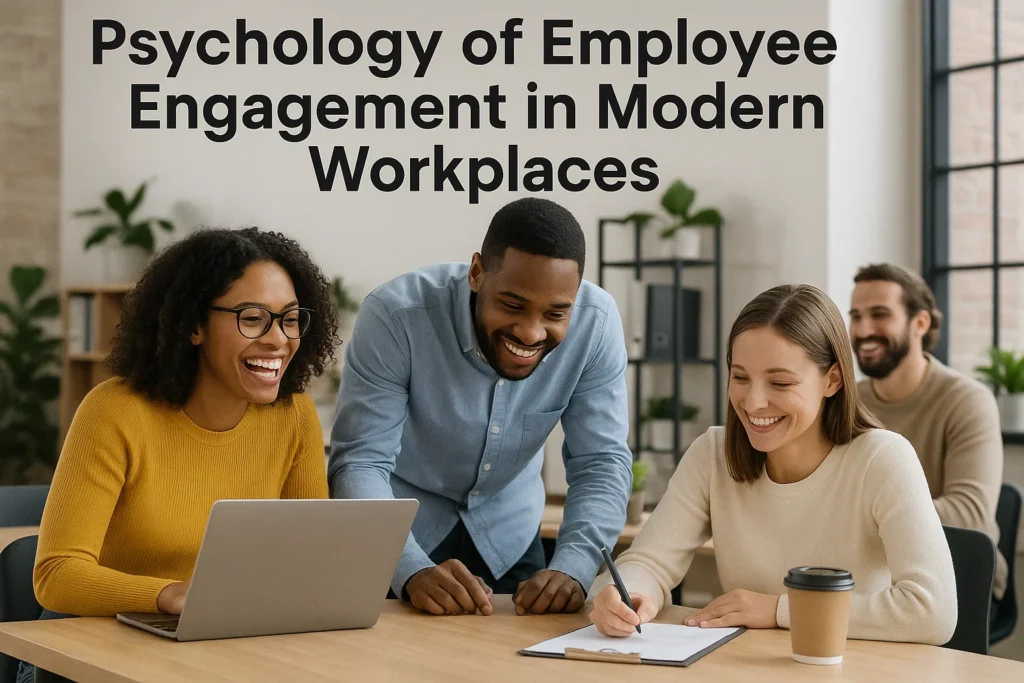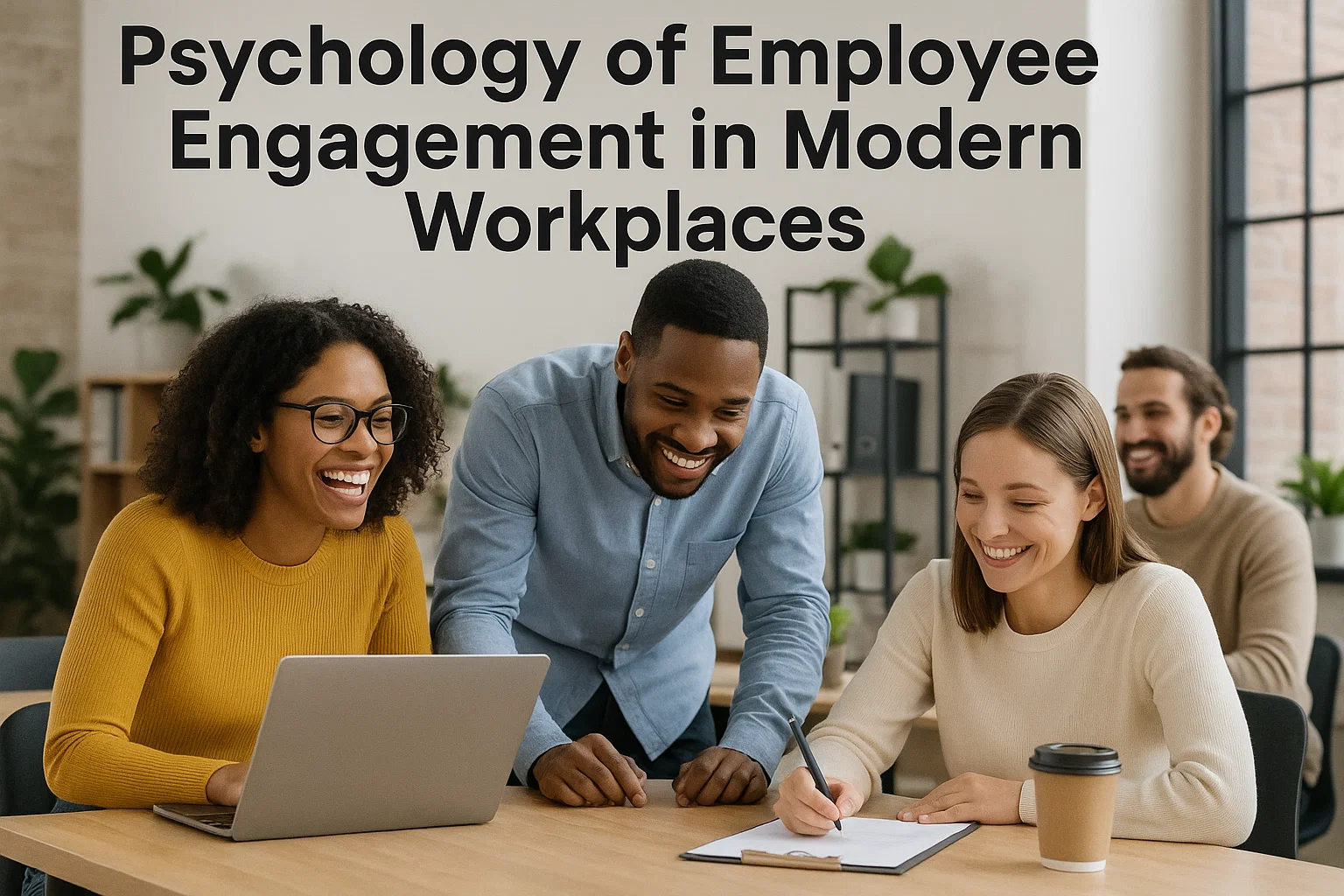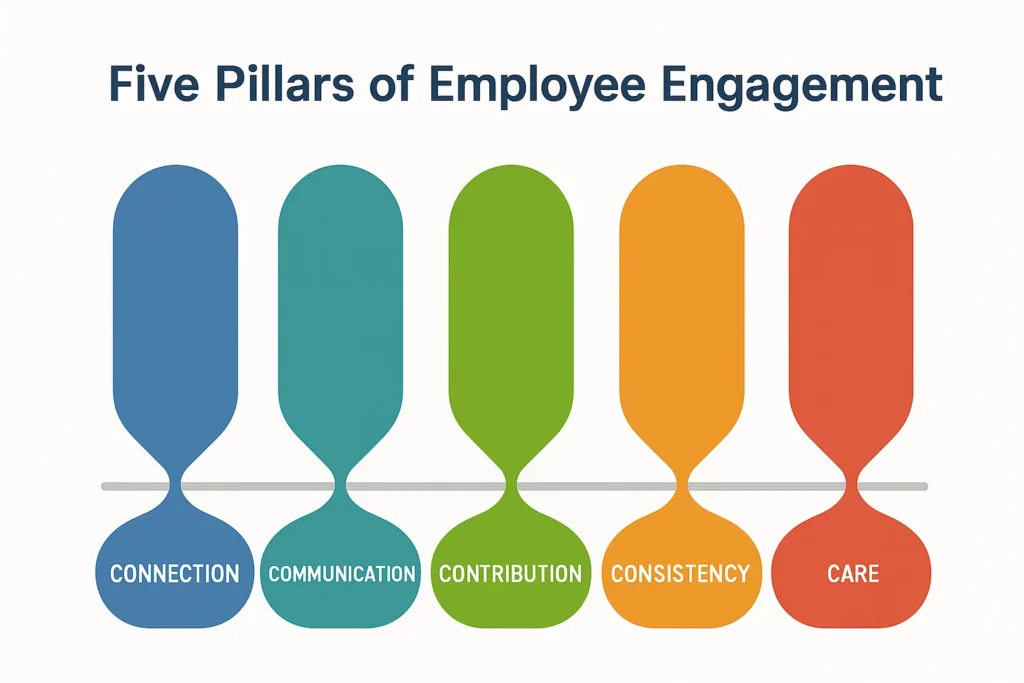 Employee engagement isn’t just a corporate trend it’s a psychological necessity. According to Gallup’s 2024 global workplace report, only 23% of employees worldwide feel truly engaged at work. That means nearly eight out of ten people show up each day without emotional connection, passion, or purpose. From a psychological perspective, this isn’t simply a productivity issue it’s a reflection of unmet human needs.
Employee engagement isn’t just a corporate trend it’s a psychological necessity. According to Gallup’s 2024 global workplace report, only 23% of employees worldwide feel truly engaged at work. That means nearly eight out of ten people show up each day without emotional connection, passion, or purpose. From a psychological perspective, this isn’t simply a productivity issue it’s a reflection of unmet human needs.
When we look closer, employee engagement tells us how people think, feel, and act toward their work. It’s about emotional energy, trust, and meaning. Understanding this psychology is key for any organization that wants its people not just to stay but to care, create, and contribute.
Understanding the Core Psychology Behind Engagement
At its core, employee engagement is a blend of emotional commitment and cognitive focus. It’s the psychological bond between a person and their organization the sense that “my work matters and I matter here.”
Psychologists Edward Deci and Richard Ryan’s Self-Determination Theory helps explain this. They found that humans are naturally motivated when three basic needs are met: autonomy, competence, and relatedness. In the workplace, this translates to freedom in decision-making, mastery in one’s skills, and meaningful relationships. When these needs are fulfilled, motivation becomes intrinsic not driven by fear or salary alone.
An engaged employee doesn’t just complete tasks; they identify with the company’s mission. They see personal growth and purpose in what they do, which turns ordinary work into meaningful effort.
The Emotional Drivers of Workplace Motivation
Emotions are the heartbeat of engagement. When employees feel emotionally safe and appreciated, their motivation soars. Let’s look at the key emotional triggers that fuel engagement:
- Feeling valued: People want acknowledgment. Recognition tells the brain, “You matter.” This releases dopamine, a reward chemical linked to happiness and drive.
- Sense of belonging: Humans are wired for connection. When teams share mutual respect, individuals feel psychologically safe to share ideas without fear.
- Trust and fairness: Trust is a psychological anchor. When leadership acts fairly, employees engage more deeply because they believe the system works for them, not against them.
- Growth and mastery: Learning new skills triggers curiosity and confidence two powerful motivators in workplace psychology.
Herzberg’s Motivation-Hygiene Theory also reminds us that engagement thrives when work itself is meaningful, not just when conditions are comfortable. People need achievement, recognition, and responsibility to feel emotionally fulfilled.
The 5 C’s of Employee Engagement
These five psychological pillars explain why some organizations feel alive while others feel drained:
- Connection – The social bond among colleagues builds trust and empathy. Employees who feel emotionally connected collaborate better and show loyalty.
- Communication – Open, honest conversations reduce uncertainty and anxiety, which are major barriers to engagement.
- Commitment – When values align between employee and employer, work becomes a shared mission rather than a daily obligation.
- Care – Acts of empathy from management like understanding personal struggles create emotional security, which strengthens engagement.
- Celebration – Recognition activates positive reinforcement. Celebrating wins, big or small, keeps motivation alive and encourages repeat performance.
Psychologically, this aligns with behavioral reinforcement theory (B.F. Skinner), where positive outcomes increase the likelihood of repeated actions.
The 4 Pillars of Engagement Psychology
Behind every engaged employee are four psychological needs that keep them inspired:
- Purpose – People crave meaning beyond money. When work connects to a bigger goal helping others, building something valuable it fulfills the brain’s desire for significance.
- Meaningful Work – Employees who understand how their role contributes to larger success experience emotional satisfaction and pride.
- Growth – The human mind thrives on challenge and progress. Opportunities to learn prevent stagnation and encourage long-term engagement.
- Recognition – Praise activates the reward system, reinforcing positive behavior and strengthening emotional connection with the organization.
These four pillars work together to create what psychologists call “emotional resonance” when a person’s inner values harmonize with their work environment.
Cognitive Engagement and Employee Behavior
Beyond emotion lies the cognitive side of engagement the mental focus and energy we bring to work. Cognitive engagement means an employee is not just physically present but mentally invested. They think creatively, anticipate problems, and look for solutions.
According to Attention Theory, our mental resources are limited. When stress, noise, or unclear goals dominate, engagement drops because attention is scattered. Conversely, when employees have clarity and purpose, they enter a psychological flow state complete absorption in meaningful work.
Psychological safety, a term popularized by Harvard’s Amy Edmondson, also plays a key role. When people feel safe to speak up, make mistakes, or challenge ideas, they invest more of their cognitive energy. This leads to innovation, better teamwork, and stronger ownership of results.
The Role of Leadership Psychology in Engagement
Leaders are the emotional architects of engagement. Their words, tone, and empathy shape how employees feel daily. Research shows that employees don’t leave jobs they leave managers.
Transformational leadership theory explains why. Transformational leaders inspire by vision, not control. They motivate through empathy, trust, and shared purpose. When leaders show emotional intelligence understanding their own emotions and others’ they activate a powerful cycle of mutual respect.
Psychologically, this builds emotional contagion the spread of positivity across teams. A motivated leader creates motivated employees. Over time, this emotional culture becomes the organization’s strongest driver of performance.
The 5 R’s of Engagement: Recognize, Reward, Respect, Responsibility, and Relationships
Each of these elements fulfills a key psychological need:
- Recognize – Validation satisfies the brain’s need for acknowledgment and boosts self-esteem.
- Reward – Fair rewards (not just financial) signal equity and value, reinforcing desirable behavior.
- Respect – Respect nurtures dignity, a core human motivator. Without it, even high salaries can’t buy loyalty.
- Responsibility – Giving employees ownership satisfies their need for autonomy and builds intrinsic motivation.
- Relationships – Strong social bonds fulfill the universal human desire for belonging and connection.
Together, these “R’s” form a psychological ecosystem where people feel empowered and valued a place where engagement naturally grows.
How Organizational Culture Shapes Engagement
Culture is the invisible psychology of a workplace. It’s the shared beliefs, behaviors, and symbols that make people feel part of something bigger. A healthy culture satisfies emotional needs trust, respect, safety while a toxic one breeds anxiety and detachment.
When organizations promote inclusion, fairness, and transparency, they meet the psychological need for equality. Diversity, too, enhances engagement by allowing people to express their authentic selves without fear of judgment.
A culture that listens rather than dictates transforms the workplace into a community. Employees who feel heard experience lower stress, better mental health, and higher commitment.
The Psychological Cost of Disengagement
The absence of engagement has a measurable emotional cost. Disengaged employees often show symptoms of mental fatigue, cynicism, and learned helplessness a psychological state where effort feels pointless.
Gallup estimates that disengagement costs the global economy over $8.8 trillion annually in lost productivity. But beyond numbers, the real cost is emotional. People lose creativity, confidence, and meaning. This emotional erosion can even lead to burnout and depression.
Understanding disengagement as a psychological condition rather than laziness helps organizations respond with empathy instead of punishment.
Strategies to Boost Engagement Using Psychology
Psychology offers a roadmap for improving engagement that works across industries and cultures:
- Promote Autonomy: Let employees make meaningful choices. Autonomy fuels intrinsic motivation and trust.
- Set Clear Goals: Unclear expectations breed anxiety; clarity builds focus and confidence.
- Develop Emotional Intelligence: Train managers to understand feelings, listen actively, and respond with empathy.
- Encourage Feedback Loops: Constructive feedback helps the brain adjust, learn, and grow boosting confidence and skill mastery.
- Prioritize Mental Health: Programs supporting well-being signal that the organization values people, not just performance.
- Recognize Regularly: A simple thank-you can reset morale and reignite engagement faster than complex incentives.
Each of these practices addresses a psychological need security, belonging, purpose, and growth. When these needs are met, engagement becomes sustainable.
Turning Psychology into Practice
Employee engagement isn’t built on slogans or surveys it’s rooted in human psychology. People want meaning, respect, and connection. They want to feel that their work contributes to something greater than themselves.
When organizations invest in understanding how the human mind works, they build more than productivity they build purpose. Engagement, then, becomes more than a metric; it becomes a shared emotional journey between people and their workplace.
The bottom line? Engagement is psychology in motion. When employees thrive emotionally, organizations flourish naturally.

Founder of Psyvanta.com, Muhammad Nawaz writes simple, helpful articles on mental health and human behavior for South Asian readers.


